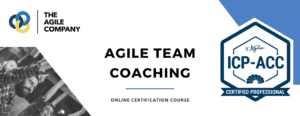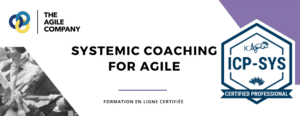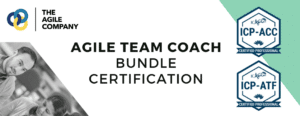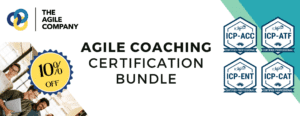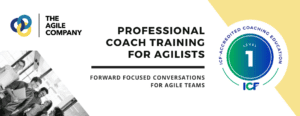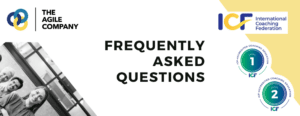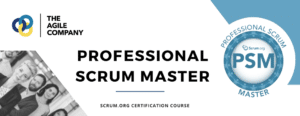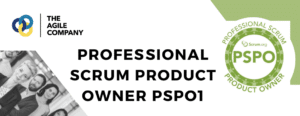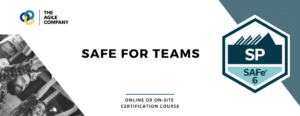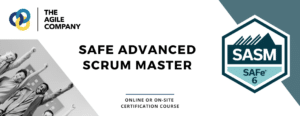Building a Culture of Innovation: Lessons from Leading Companies
Innovation is the lifeblood of organizations seeking long-term success and growth. To foster a culture of innovation, companies such as SpaceX, Booking.com, Amazon, and Google have become renowned for their ability to push boundaries and consistently deliver groundbreaking solutions. By examining their approaches, we can extract valuable insights on how to build and sustain a culture of innovation. This article explores key principles and showcases case studies that highlight the importance of allowing innovation to happen everywhere within an organization.
Define and communicate a clear vision
Establish a clear vision that emphasizes the importance of innovation and communicates it to all employees. Make sure everyone understands why innovation is crucial for the organization’s success.
«“[Mars] would just be the greatest adventure. Ever. And very exciting. And I think we need things in life that are exciting and inspiring. It can’t just be about solving some awful problem. There have to be reasons to get up in the morning.”» Elon Musk
Case Study: SpaceX
SpaceX, led by visionary entrepreneur Elon Musk, is revolutionizing the space industry through innovative technologies. They have successfully built a culture of innovation by clearly communicating their vision to make life multiplanetary. This ambitious goal has inspired employees to think beyond traditional boundaries and pursue groundbreaking ideas, leading to remarkable achievements like reusable rockets and plans for Mars colonization.
Lesson: A clear and compelling vision motivates employees to strive for breakthrough innovation and aligns their efforts towards a common goal.
Encourage risk-taking
Create a safe space for employees to take risks and experiment with new ideas. Encourage them to step outside their comfort zones and reward and recognize their efforts, even if they result in failure. Emphasize that failure is an opportunity for learning and growth.
Case Study: Booking.com
Booking.com, the world’s leading online travel platform, encourages a culture of risk-taking by empowering employees to experiment with new ideas. Their “Booking.com Booster” program provides resources and support to employees who want to pursue innovative projects that align with the company’s mission. This has led to the development of initiatives such as sustainable tourism programs and technology-driven enhancements to the booking experience.
Lesson: Creating a safe environment where risk-taking is encouraged fosters innovation and empowers employees to explore uncharted territories.
Foster collaboration and diversity
Encourage collaboration and the exchange of ideas across departments, teams, and hierarchies. Create opportunities for employees to work together on cross-functional projects and initiatives. Embrace diversity in your workforce, as different perspectives and backgrounds can lead to more innovative solutions.
Case Study: Amazon
Amazon thrives on collaboration and diversity, fostering an environment where employees from various backgrounds and disciplines work together. Their “two-pizza teams” approach enables small, cross-functional teams to work independently and encourages collaboration across the organization. This inclusive culture has been instrumental in driving innovation, enabling Amazon to continuously expand into new markets and develop groundbreaking products like the Kindle and Amazon Web Services (AWS).
Lesson: Collaboration and diversity fuel innovation by bringing together diverse perspectives, fostering creativity, and encouraging the cross-pollination of ideas.
Provide resources and support
Ensure that employees have the necessary resources, such as time, budget, and tools, to explore and implement new ideas. Support them with mentorship, training, and access to relevant information and expertise. Remove any bureaucratic barriers that may hinder innovation.
Case Study: Google
Google’s “20% time” policy is a legendary example of providing resources and support for innovation. This policy allows employees to spend 20% of their work time pursuing projects of personal interest, even if they are unrelated to their primary responsibilities. This freedom has resulted in transformative innovations such as Gmail and Google News, showcasing the power of providing dedicated time and resources for individual creativity.
Lesson: Allocating resources and providing support for employees to explore their passions and ideas fuels innovation and encourages out-of-the-box thinking.
Promote a learning mindset
Encourage a continuous learning mindset among employees. Promote ongoing education and skill development, both within and outside the organization. Encourage employees to stay updated on emerging trends, technologies, and industry best practices.
Case Study: Google (X)
Google’s innovation lab, known as Google X, operates on the principle of embracing failure as a stepping stone to success. Google X encourages employees to tackle audacious moonshot projects and take on the inherent risks. By adopting a growth mindset and viewing failures as learning opportunities, Google X has made significant breakthroughs such as self-driving cars (Waymo) and internet-beaming balloons (Project Loon).
Lesson: Promoting a learning mindset encourages employees to embrace challenges, learn from failures, and continuously iterate towards innovation.
Empower employees
Give employees autonomy and empower them to make decisions and take ownership of their work. Encourage them to challenge the status quo, think critically, and come up with innovative solutions. Provide a supportive environment that values and respects their contributions.
Case Study: 3M
3M, the renowned innovation-driven company, has a long history of empowering employees to drive innovation. Their “15% rule” allows employees to spend 15% of their time working on projects outside their core responsibilities. This practice has led to game-changing innovations like Post-it Notes and Scotchgard, highlighting the power of giving employees autonomy and encouraging them to pursue their ideas.
Lesson: Empowering employees by providing autonomy and ownership over their work fosters innovation and unleashes the full potential of their creativity.
Celebrate and share successes:
Celebrate and recognize innovative ideas, projects, and accomplishments. Share success stories and showcase how innovation has positively impacted the organization. This not only motivates employees but also reinforces the importance of innovation as a core value.
Case Study: Apple
Apple’s annual Worldwide Developers Conference (WWDC) is a prime example of celebrating and sharing successes. At WWDC, Apple showcases their latest innovations and recognizes the contributions of developers who have created exceptional applications and experiences for their platforms. This celebration of success not only motivates the innovators but also inspires the broader developer community.
Lesson: Celebrating and sharing successes creates a positive feedback loop, motivating employees and encouraging the proliferation of innovative ideas.
Establish feedback mechanisms:
Create channels for employees to provide feedback, suggestions, and ideas. Regularly solicit their input on how to improve processes, products, and services. Actively listen to their feedback and implement relevant ideas whenever possible.
Case Study: Roche
Roche, a global pharmaceutical and diagnostics company, has embraced a culture of innovation by establishing robust feedback mechanisms. They encourage employees at all levels to provide feedback, suggestions, and ideas through various channels. Roche’s internal platforms, such as Idea Management, allow employees to share innovative ideas and collaborate with others to refine and develop them further. This feedback-driven culture has led to the creation of breakthrough drugs and diagnostic technologies, addressing critical healthcare challenges.
Lesson: Establishing feedback mechanisms empowers employees to contribute their ideas, fosters a culture of continuous improvement, and ensures that innovation is not limited to a select few but can arise from diverse sources within the organization.
Lead by example
It is an ongoing process
Building a culture of innovation is an ongoing process. Regularly assess and evaluate your efforts to identify areas for improvement. Seek feedback from employees and adjust your strategies accordingly. Innovation should be woven into the fabric of the organization and constantly nurtured.
Remember that building a culture of innovation takes time and effort. It requires a combination of leadership support, employee engagement, and organizational structures and processes that support and reward innovative thinking.
Importance of Allowing Innovation to Happen Everywhere:
Each of the case studies mentioned, including SpaceX, Booking.com, Amazon, Google, and Roche, underscores the importance of allowing innovation to flourish throughout the organization. By enabling innovation to happen everywhere, companies tap into the collective wisdom and creativity of their workforce, resulting in the following benefits:
Increased Employee Engagement: When employees are given the opportunity to contribute their ideas and actively participate in the innovation process, they become more engaged and committed to the organization’s success. This engagement fosters a sense of ownership and pride, driving them to go above and beyond to generate innovative solutions.
Diverse Perspectives and Ideas: Innovation knows no boundaries and can emerge from any department or individual within the organization. By allowing innovation to happen everywhere, companies benefit from diverse perspectives, experiences, and skill sets. This diversity fuels creativity and promotes a more comprehensive approach to problem-solving, leading to more robust and innovative solutions.
Agility and Adaptability: In today’s fast-paced business landscape, organizations must be agile and adaptable to stay competitive. Allowing innovation to happen everywhere facilitates the rapid generation and implementation of new ideas, enabling organizations to respond swiftly to market changes, customer needs, and emerging trends.
Talent Retention and Attraction: Creating an environment that encourages innovation throughout the organization enhances employee satisfaction and attracts top talent. Talented individuals seek organizations that value their ideas, provide opportunities for growth, and foster a culture of innovation. Allowing innovation to happen everywhere positions the organization as an attractive and dynamic workplace for innovators.
Continuous Improvement and Future Readiness: Embracing innovation at all levels ensures that the organization is consistently improving and staying ahead of the curve. By fostering a culture where employees are empowered to innovate, organizations cultivate a mindset of continuous improvement and future readiness, positioning themselves for sustained success in a rapidly evolving world.
Innovation should not be confined to a specific team or department within an organization. When employees from all levels and areas of expertise are encouraged to contribute their ideas, organizations can harness the collective creativity, diverse perspectives, and untapped potential within their workforce. This approach fosters engagement, agility, and continuous improvement, enabling organizations to thrive in today’s competitive landscape and shape a sustainable future through innovative solutions.

